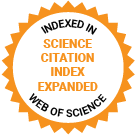Journal of Medical Internet Research
The leading peer-reviewed journal for digital medicine and health and health care in the internet age.
Editor-in-Chief:
Gunther Eysenbach, MD, MPH, FACMI, Founding Editor and Publisher; Adjunct Professor, School of Health Information Science, University of Victoria, Canada
Impact Factor 5.8 CiteScore 14.4
Recent Articles

The COVID-19 pandemic prompted social distancing policies and caused misinformation that hindered in-person HIV screening for high-risk groups. Social media platforms provide additional options for voluntary counseling and testing (VCT) for HIV, overcoming these limitations. However, there is a lack of data on HIV testing recruitment through social media platforms and its outcomes during the pandemic.

Online wellness influencers (individuals dispensing unregulated health and wellness advice over social media) may have incentives to oppose traditional medical authorities. Their messaging may decrease the overall effectiveness of public health campaigns during global health crises like the COVID-19 pandemic.

Detecting early dropout from digital interventions is crucial for developing strategies to enhance user retention and improve health-related behavioral outcomes. Bricker and colleagues proposed a single metric that accurately predicted early dropout from 4 digital tobacco cessation interventions based on log-in data in the initial week after registration. Generalization of this method to additional interventions and modalities would strengthen confidence in the approach and facilitate additional research drawing on it to increase user retention.

Growth hormone deficiency (GHD) and idiopathic short stature (ISS) are the major etiologies of short stature in children. For the diagnosis of GHD and ISS, meticulous evaluations are required, including growth hormone provocation tests, which are invasive and burdensome for children. Additionally, sella magnetic resonance imaging (MRI) is necessary for assessing etiologies of GHD, which cannot evaluate hormonal secretion. Recently, radiomics has emerged as a revolutionary technique that uses mathematical algorithms to extract various features for the quantitative analysis of medical images.



To cope with the enormous burdens placed on health care systems around the world, from the strains and stresses caused by longer life expectancy to the large-scale emergency relief actions required by pandemics like COVID-19, many health care companies have been using artificial intelligence (AI) to adapt their services. Nevertheless, conceptual insights into how AI has been transforming the health care sector are still few and far between. This study aims to provide an overarching structure with which to classify the various real-world phenomena. A clear and comprehensive taxonomy will provide consensus on AI-based health care service offerings and sharpen the view of their adoption in the health care sector.

Teledentistry is a field of activities that comprises information and communication technologies (ICTs) applied to dentistry, including the exchange of clinical information, patient care, and the use of educational strategies across remote distances. Its use has grown progressively over the past decades—intensified by the COVID-19 pandemic—and has been improving the provision of dental services and educational strategies ever since.

The increasing rates of mental health challenges among young people highlight an urgent need for accessible and effective treatment. However, current mental health systems face unprecedented demand, leaving most young people globally with unmet mental health needs. Smartphones present a promising solution to this issue by offering in-the-moment support through innovative just-in-time adaptive interventions, which provide support based on real-time data.

Hereditary breast and ovarian cancer (HBOC) is a major type of hereditary cancer. Establishing effective screening to identify high-risk individuals for HBOC remains a challenge. We developed a prototype of a chatbot system that uses artificial intelligence (AI) for preliminary HBOC screening to determine whether individuals meet the National Comprehensive Cancer Network BRCA1/2 testing criteria.

Virtual wards (VWs) are being introduced within the National Health Service (NHS) in England as a new way of delivering care to patients who would otherwise be hospitalized. Using digital technologies, patients can receive acute care, remote monitoring, and treatment in their homes. Integrated care system commissioners are employees involved in the planning of, agreeing to, and monitoring of services within NHS England and have an important role in the adoption and implementation of VWs in clinical practice.

Frailty leads to reduced physical activity can cause increased fall risk. This contributes to accelerated aging processes, leading to adverse health outcomes and reduced quality of life. We have developed and piloted the design, usability, safety, and feasibility of a gaming-based cognitive-motor (CogXergaming) tele-exercise protocol in prefrail older adults.
Preprints Open for Peer-Review
Open Peer Review Period:
-
Open Peer Review Period:
-
Open Peer Review Period:
-
Open Peer Review Period:
-
Open Peer Review Period:
-
Open Peer Review Period:
-

















